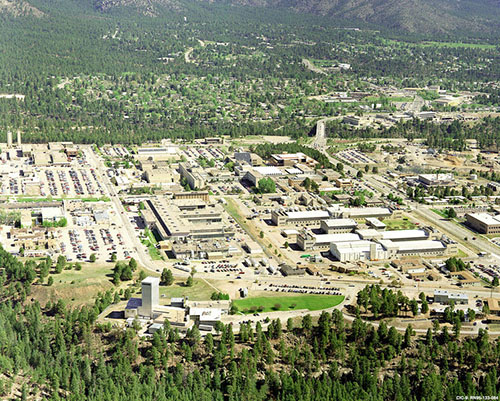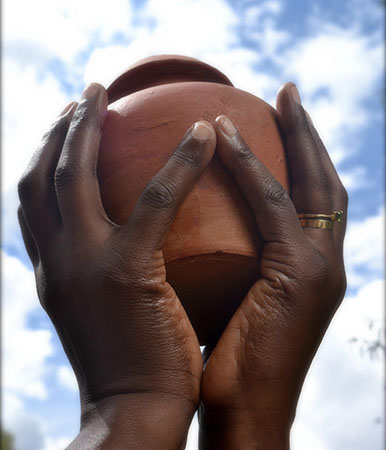GAIA MANDALA
GLOBAL HEALING COMMUNITY
Earth Treasure Vase for Hiroshima, Japan

Mayumi was the steward of one of the Earth Treasure Vases, delivering it to Hiroshima, Japan in the mid 1990s. This interview was conducted by Joanna Harcourt Smith, a writer, poet and director of FuturePrimitive.org, and by Cynthia Jurs, founder of Alliance for the Earth and the Gaia Mandala Global Healing Community.

The Interview with Mayumi Oda
MAYUMI: Yes, I was doing anti-nuclear work, and understood that the Japanese government was planning to utilize plutonium for electricity. I thought that the people who suffered from the bombing of Hiroshima should not be subject to such a thing, so I started this project, Plutonium Free Future, and really began to feel the complexity of nuclear issues.

Still, all around Hiroshima, you feel it when you go there. You can almost hear the cries. Then the cry was, “Give me water.” “Give me food”. “Give me water.” And it’s an excruciating scream you can hear, especially around the river edges. To this day, people go and do ceremonies there because, you know, it continues.
I realized that because of the dropping of the nuclear bomb in Hiroshima and Nagasaki, it would be good to bring healing to those places that actually physically experienced that horror.
In 1995, the fiftieth year of the anniversary of Hiroshima, we brought a fire which had been kept burning from the time of the dropping, in a container, to Los Alamos, the birthplace of the atomic bomb, to give it back.

JOANNA: Mayumi, what was your feeling when you were in Los Alamos for the 50th Anniversary of the bombing?
MAYUMI: As part of the Atomic Mirror Pilgrimage that Pamela Meidell started, we met at Chimayo first, because it’s such a sacred place. Our intention was to walk through all the places with a nuclear legacy. (Note: Pamela Meidell was the steward of another Earth Treasure Vase – the one dedicated toAustralia, and to which she offered earth from all of these places).

It was difficult to go to Los Alamos and return the fire. That fire had been burning for 50 years but the Director of Los Alamos received it… It was very powerful to revisit all those sites with the intention of healing. I had the feeling that the land in Los Alamos is so sacred. I imagine that even the people who built the lab probably thought, “this is very sacred work in a sacred place”. They went over to the gods’ territory. But it was like they had a loss of hubris and did not respect the sacred. I felt a strange feeling there. I don’t know how to express it too well. It was like we should not touch the one that we touched.
CYNTHIA: The first of the Earth Treasure Vases was buried in a cave above Los Alamos.
MAYUMI: Yes, I know, and definitely, they need it.
MAYUMI: I think it’s the nuclear issues that are the source of violence, especially the modern violence that has brought a tremendous fear to people’s mind, and deprived us of our well-being; the well-being of the nation, the United States of America, in such a deep way.

Some people say that Hiroshima was to show Russia that the United States had so much power. To give Russia fear. Not so much to kill Japanese people. You know, people say that is what’s true. And on the other hand, the Japanese were completely ready to surrender without the bombing. It was like we were used to show the power of the United States. When you think about it, it’s really quite serious.
JOANNA: Mayumi, what is your feeling about the third generation in Japan, since the bombs? How are your dear people in Japan coming along?
MAYUMI: A lot of people have now been born and raised without knowing the fear of war. And they’ve gone to tremendous effort not to teach them about the war, about the nuclear bombs that were dropped on Hiroshima and Nagasaki. Even about China and Korea, who we invaded. The reason is that our government was created by prisoners of war, by the people who were put into power by the American government when they left the occupation. And it’s very frightening to realize that our power came from the training of the militarists who invaded. There is something so fundamentally wrong about my country. And it’s very difficult for me to even say it out loud, but I’m saying it, to you now.
JOANNA: Yes. Yes.
MAYUMI: So, it’s very hard to have hope for Japan until they come out and say, “we have done this. We are sorry”. That peace cannot be restored.
CYNTHIA: Mayumi, what was the prayer you were carrying, when you took the Earth Treasure Vase to Hiroshima?
MAYUMI: Many different people brought so many gifts as offerings to the original ceremony we did with the vase at Green Gulch Zen Center. Very, very dear and important things were offered into the Vase, including relics from Hiroshima. An enormous amount of things went in. So, all this spiritual manna went into the Vase with all of our prayers, and I carried that Vase to Hiroshima to meet a woman named Satomi Oba.
Satomi was directing the Plutonium Action Network in Hiroshima. She worked internationally and was very close to a survivor named Suzuko Numata, who was a young woman in Hiroshima when she was bombed. Suzuko was in the Post Office near her house when she was bombed, and suffered burns on her face and other places. She was engaged to a man who was a soldier, and was sent to China where he was killed. So at the same time as the bombing she also lost her fiancée. She dedicated her life to telling the story of what happened and how she survived. She sat underneath a Polonia tree to tell the story of the bombing, especially to schoolchildren who visit Hiroshima, so that we don’t forget what happened.
Traditionally, the Polonia tree, which has a very strong wood and is practically fireproof, is planted by the parents when a girl child is born so that by the time she’s married, they can use that lumber to make a chest. The reason Suzuko sat underneath the Polonia tree was that this particular tree was bombed in the war and was quite damaged. It had almost burned down but then it blossomed… beautiful purple flowers.

Wendy Johnson of Green Gulch Farms and I propagated the seeds, and when they became small trees she gave them to many peace organizations and spiritual communities (for more information about this, see Wendy’s book, Gardening At The Dragon’s Gate). So the story continues that way, through the Earth Treasure Vase and the seeds of the Polonia tree.
CYNTHIA: If it is possible to get some seed of the Polonia tree, I would like to initiate a prayer of my own, that collectively, we cultivate a Polonia tree in honor of this work that we have been sharing today, and bring a new tree to life on this Earth for the benefit of the beings of the future. Where exactly did the Vase end up being buried?
MAYUMI: The Vase was buried in the mountains, across the river in a park overlooking Hiroshima, atop a small hill over the river. There is a Peace Park in the center of town,but the park where the Vase was buried, is across the river where a lot of people went looking for water after the bombing, and died. It looks over everything that happened. That site really overlooks the whole thing. Unfortunately, Suzuko Numata and Satomi Oba have both passed away, but we continue with our intentions there and I feel the Vase is still working.
JOANNA: I know you have a very deep connection with Mother Earth, a very deep connection with the Goddess, and that you grow medicinal herbs and vegetables. Can you talk about the healing aspect of the Mother?


As a farmer, one feels that we are completely part of creation. That we are just a small wave in the huge cosmos of ocean. As an artist, I want to bring that feeling of being a part of creation to my art. It takes your breath away and is a beautiful, comforting release to not be caught in fear. So I really try in my painting to promote this sensible reality, that God is within us and is a sacred, nurturing presence within ourselves. My art is about promoting the feminine, this feeling; the goddess. Even after 40 years, that work is continuing.
I am also preparing a book about love, not fear, and the nurturing of the feminine that has to be restored within our culture. This is what I’ve been doing. I have come to see that fighting with militarism is a promotion of the fear that deprives us, our children and their offspring, of our well-being. So, to build a nurturing feminine culture is something I can offer through my art.
JOANNA: And it is your deep feeling (and you’ve been working at this for 40 years), that the feminine power and the image of the goddess, those beautiful images of the goddess that you give us, Mayumi, are images of peace.
MAYUMI: Yes, I think so. And that people can use these nurturing feminine images to restore hope. This is my belief.
JOANNA: In closing, can you say a little bit more about the goddess? Just a little bit more because we just can’t get enough of it.
MAYUMI: Hawaii is the island of “aloha”, and “aloha” is compassion for the “ohana,” the family. We are all family, and we have to be happy altogether. We can’t be happy by ourselves. And that’s the message of the Goddess, the Mother, the Grandmothers, who love us all.

CYNTHIA: And thank you from me too, Mayumi. It’s been a deep joy, and honor and pleasure to be able to share the path with you, in these ways. Thank you so much for your involvement with the Earth Treasure Vase and many, many blessings to you with the work that you’re continuing to do.
MAYUMI: The same to you. You’re an inspiration. Aloha.
TOGETHER: Aloha.




